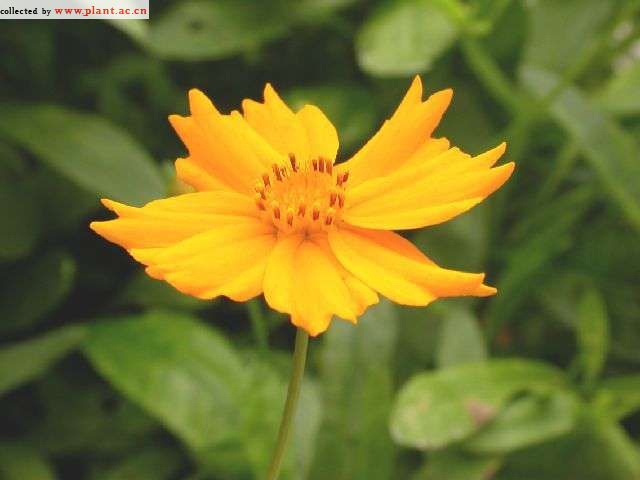Coreopsis auriculata NanaTickseed
Family:Asteraceae
属:金鸡菊属
common name:Tickseed
introduce:Plant Type: Herbaceous perennial
Family: Asteraceae
Missouri Native: No
Native Range: None
Height: 0.5 to 0.75 feet
Spread: 0.5 to 0.75 feet
Bloom Time: May - June
Bloom Color: Yellow
Sun: Full sun (only)
Water: Medium moisture
Maintenance: Low
General Culture:
Easily grown in medium wet, well-drained soil in full sun. Plants tolerate humidity and some dry conditions, but generally are not as drought tolerant as most other species of Coreopsis. Prompt deadheading of spent flower stalks can be tedious for a large planting, but does tend to encourage additional bloom. Plants may be sheared in mid to late summer to promote a fall rebloom and to remove any sprawling or unkempt foliage. In optimum growing conditions, plants will spread in the garden over time by stolons to form an attractive ground cover, but spread is easy to check and is not considered to be invasive.
Noteworthy Characteristics:
Nana is a stoloniferous, dwarf cultivar which typically forms a foliage mat to 6-9" tall consisting of dense, bushy, slowly-spreading clumps of short, broad-oval, shiny deep green leaves (to 1-3" long). Numerous bright orange-yellow daisy-like flowers (1-2" diameter) with yellow rays (toothed at the tip) and yellow center disks appear singly on naked stems above the foliage in late spring to early summer. Sparse and intermittent rebloom may continue throughout the summer into fall if spent flowers are regularly deadheaded, however in hot summer climates like the St. Louis area plants often stop blooming in mid-summer with a rebloom occurring in fall after temperatures moderate. Ariculata means "eared" in reference to the ear-like lobes at the base of many of the leaves. Plants in the genus Coreopsis are sometimes commonly called tickseed in reference to the resemblance of the seeds to ticks.
Problems:
No serious insect or disease problems. Tends to sprawl, particularly if grown in moist and/or fertile soils. Crown rot may occur if grown in moist, poorly drained soils. Foliage decline in hot summer climates may occur if soils are allowed to dry out.
Uses:
Bright flowers and long bloom provide excellent accent in border fronts or rock gardens. Good small area ground cover. Also effective as an edger for borders or walks/paths.
